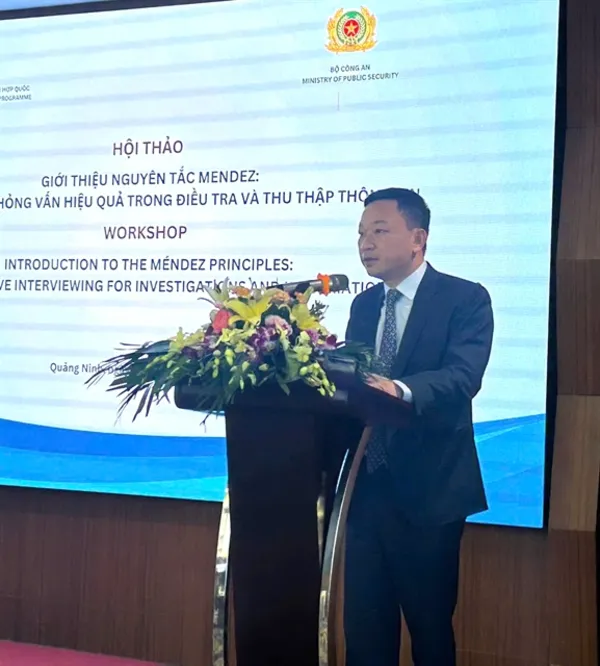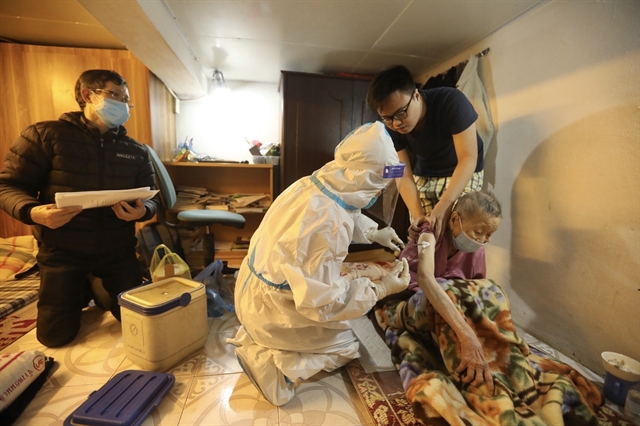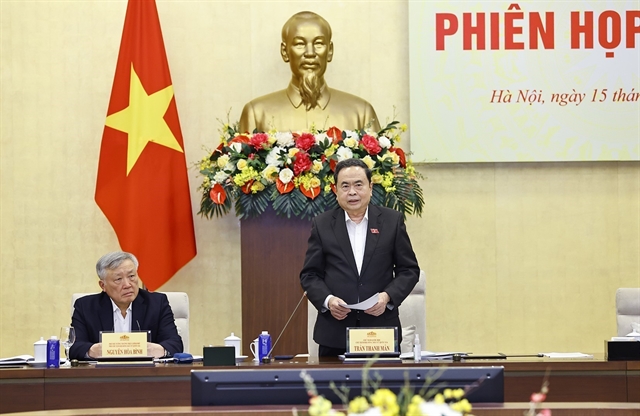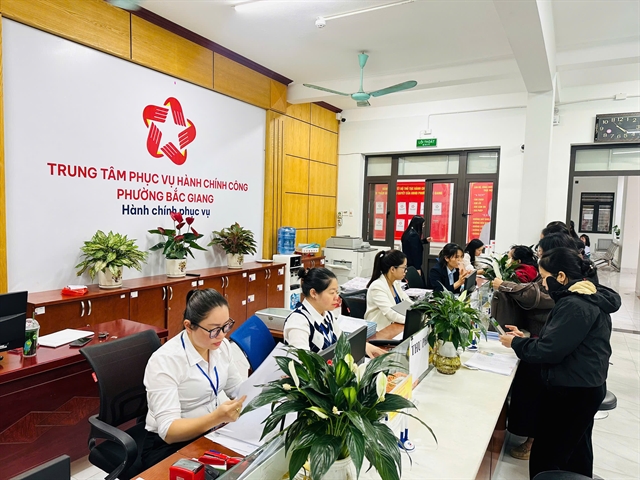 Opinion
Opinion

WHO Representative in Việt Nam Dr Kidong Park said despite having a higher vaccination rate than goal set by WHO, Việt Nam needs to reach the “unreached high risk group” in vaccination and is expected to embrace a new surge in COVID-19 cases fuelled by increased mobility during Tết and Omicron in the community.

|
| An elderly woman in Cửa Đông Ward, Hoàn Kiếm District is vaccinated at home. Hà Nội has offered home vaccinations for people at high risk. — VNA/VNS Photo Minh Quyết |
In a recent interview with Vân Nguyễn, WHO Representative in Việt Nam Dr Kidong Park spoke about the country's vaccination drive and recommendations in COVID-19 strategy in the shift to flexible adaptation of the pandemic.
Despite having a higher vaccination rate than the goal set by WHO, Việt Nam needs to reach the “unreached high-risk group” in vaccination and is expected to embrace a new surge in COVID-19 cases fuelled by increased mobility during Tết and Omicron in the community.
In June 2021, when Việt Nam News spoke with the WHO, the vaccination rate in Việt Nam was below 1 per cent, making it among the countries with the lowest rate in the region. After seven months, the country has administered about 180 million doses of vaccines and is now among countries with a high vaccination rate. What are your comments on its COVID-19 vaccination campaign?
Since June 2021, Việt Nam has quickly ramped up its vaccination campaign to reach a high vaccination coverage. As of January 23, 2022, 75.1 per cent of the total population has already completed the primary series of COVID-19 vaccination.
Việt Nam has already surpassed the goal set by WHO that by mid-2022, all countries in the world should have vaccinated at least 70 per cent of its population.
What is important now is for the country to achieve the last mile of vaccination – reaching the unreached high-risk group including the elderly and people with underlying medical conditions – to ensure that no one is left behind.
What are the major factors attributed to the success of the vaccination campaign in Việt Nam?
In less than eight months, Việt Nam has secured more than 170 million vaccine doses through the whole-of-government vaccine diplomacy effort and peoples’ contribution of over US$380 million to the vaccine fund. During this period, the healthcare sector has safely administered over 160 million vaccine doses across the country.
Despite the inequity in the global distribution of vaccines, which made it hard to buy vaccines in some countries, Việt Nam has managed to secure hundreds of millions of vaccines, of which 40 per cent was donated by partners and countries. What are your thoughts on Việt Nam’s vaccine diplomacy?
Through the whole-of-government vaccine diplomacy effort, Việt Nam has secured about 46.3 million doses through the COVAX and about 22.5 million doses through donations by fellow countries. These account for about 40 per cent of the whole vaccine doses secured in the country. The vaccine diplomacy effort has also helped the timely delivery of vaccine doses purchased by Việt Nam.
Việt Nam has shifted from Zero-COVID-19 policy to flexible and safe adaptation to the pandemic. How does the high vaccination rate enable this change in COVID-19 policies in Việt Nam?
All the WHO Emergency Use Listing Procedure (EUL) approved COVID-19 vaccines are highly effective in preventing deaths and serious illness, though their effectiveness in preventing infection and mild illness varies. With high vaccination coverage and continuous implementation of 5K measures, the health system can manage COVID-19 cases effectively and the country can continue to resume economic activities.
In this context, the country should protect high-risk groups including the elderly and people with underlying medical conditions as a high priority.

|
| WHO Representative in Việt Nam Dr Kidong Park. Photo courtesy of WHO in Việt Nam |
What are your suggestions for Việt Nam in terms of COVID-19 prevention and control as Tết (Lunar New Year), is approaching with a large number of people expected to travel and at the same time, Việt Nam has confirmed the discovery of Omicron cases in the community?
Omicron is highly transmissible. Even though it may cause less severe disease as data has suggested so far, we need to prepare to respond to a real surge in cases in the coming weeks. The increased mobility and social mixing during Tết can fuel a surge, especially now that the country has just recorded community cases with Omicron.
In light of this, prevention and control should aim at increasing COVID-19 vaccination coverage. It is important to complete the “last mile” by ensuring every individual in vulnerable groups is fully vaccinated.
It is also important to urge the public to consistently follow 5K, and calibrating public health and social measures (PHSMs) as needed while strengthening health care pathways. We need more effort in introducing home-based recovery for mild/asymptomatic cases with an appropriate referral system in place.
It is also necessary to use early detection and implementing targeted response. We need to strengthen multisource surveillance including whole-genome sequencing for the early detection of and timely response to clusters of cases. especially in high-risk settings
Implementing risk-based international border control measures. We need to continue reviewing and revising policies and measures, as needed.
These interventions need to be supported by effective communication with the community, surveillance and contact tracing. — VNS




